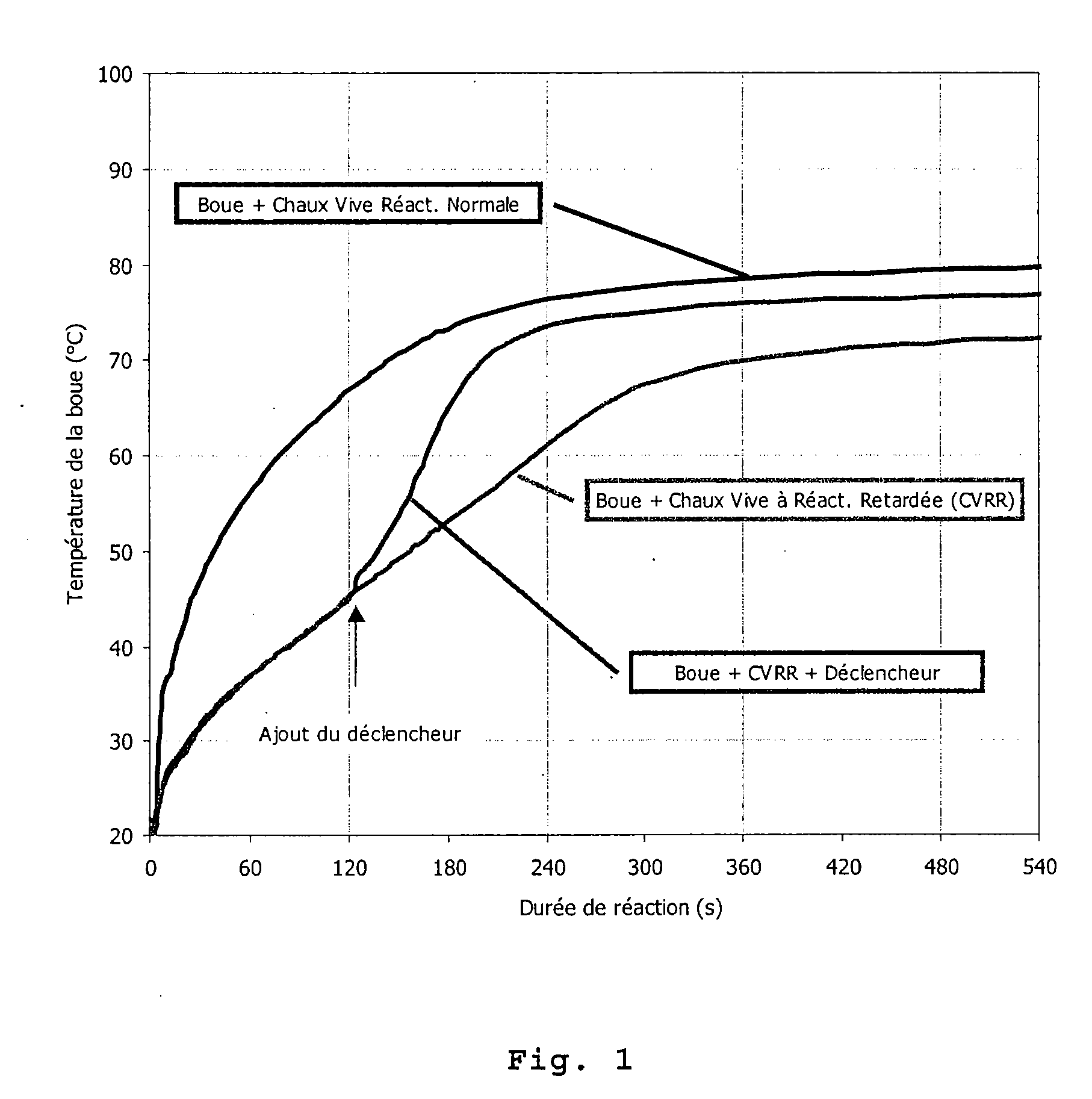Use of Partly Pre-Hydrated Lime for Separating a Mixture of Solid/Liquid Matters, Method for Treating Sludge and Purified Sludge Obtained by Said Method
- Summary
- Abstract
- Description
- Claims
- Application Information
AI Technical Summary
Benefits of technology
Problems solved by technology
Method used
Image
Examples
example 1
[0093] A biological sludge of industrial origin, having a solids concentration of 2.2% by dry weight, was mixed with stirring in the 1 m3 tank of a centrifuge (operating at 20 m3 / h) with a DRQL having a CaO / Ca(OH)2 weight ratio of 90 / 10 and a particle size such that 20 μm≦d50≦200 μm, in an amount of one part by dry weight of DRQL per one part by dry weight of solids, here being 22 kg of DRQL per 1 m3 of sludge to be treated. An aqueous solution containing 500 g / l of ferric chloride was added simultaneously to the tank in an amount of 0.8 L of this solution per 1 m3 of sludge to be treated. After centrifuging, a first wet cake was obtained having a DC of 37%, in which the DRQL was distributed uniformly. This first wet cake was left to stand so that the reaction of the CaO from the DRQL with the water of said first cake was carried out. After 72 h, it was observed that the dryness of the final cake had increased; it was 42% and remained constant beyond 72 h.
example 2
[0095] The method of example 1 above was followed, but with the difference that (a) 0.55 parts by dry weight of DRQL (i.e. 0.5 parts by weight of CaO) per one part by dry weight of solids of the initial sludge, and (b) 0.4 L (instead of 0.8 L) of aqueous FeCl3 solution per 1 m3 of sludge to be treated were used. The second cake that was recovered had a DC of 31%. After 72 h, it was observed that the DC had increased and was 34% and remained constant beyond 72 h.
example 3
[0097] The biological sludge from example 1 was treated in a filter press with addition of 1 kg of DRQL [having a CaO / Ca(OH)2 weight ratio of 85 / 15 and a particle size such that 20 μm≦d50≦200 μm] in an amount of one part by dry weight of DRQL per one part by dry weight of solids, here being 22 kg of DRQL per 1 m3 of sludge to be treated. An aqueous solution having 500 g / l of FeCl3 was added simultaneously in an amount of 0.8 l per 1 m3 of sludge to be treated. The DC of the final cake obtained was 42%. After 72 h, it was observed that the DC had increased and was 48%.
PUM
| Property | Measurement | Unit |
|---|---|---|
| Length | aaaaa | aaaaa |
| Fraction | aaaaa | aaaaa |
| Fraction | aaaaa | aaaaa |
Abstract
Description
Claims
Application Information
 Login to View More
Login to View More - R&D
- Intellectual Property
- Life Sciences
- Materials
- Tech Scout
- Unparalleled Data Quality
- Higher Quality Content
- 60% Fewer Hallucinations
Browse by: Latest US Patents, China's latest patents, Technical Efficacy Thesaurus, Application Domain, Technology Topic, Popular Technical Reports.
© 2025 PatSnap. All rights reserved.Legal|Privacy policy|Modern Slavery Act Transparency Statement|Sitemap|About US| Contact US: help@patsnap.com


